- Jul 30, 2021
6 Tips for Catching River Smallmouth Bass
Tap into the expertise of a veteran Maine outfitter and learn how to increase your success catching smallmouth bass.
“Only 99 more,” Doug Teel half-jokingly said as we released the first smallmouth bass of an afternoon. I’d spent enough time on the Penobscot River with Teel to know 100 smallmouths in a half-day outing would be a reasonable notion, so it became the goal without further discussion, and we counted down, with every smallmouth landed. The fish were still biting well when the count hit zero, and we had plenty more time we could have fished. However, we set down our rods, content with 100 even, and headed for dinner.
Teel operates Northridge Outfitters, a full-service outfitter in Maine, and turns his focus primarily to the Penobscot River’s fabulous smallmouth bass fishery through the summer. He has been fishing the river for decades and has an astounding understanding of river smallmouth behavior and how to tap into the best action.
We talked with Teel to glean his expertise and compiled six top tips that will help you catch more river smallmouth bass.
1) Cover the Bases
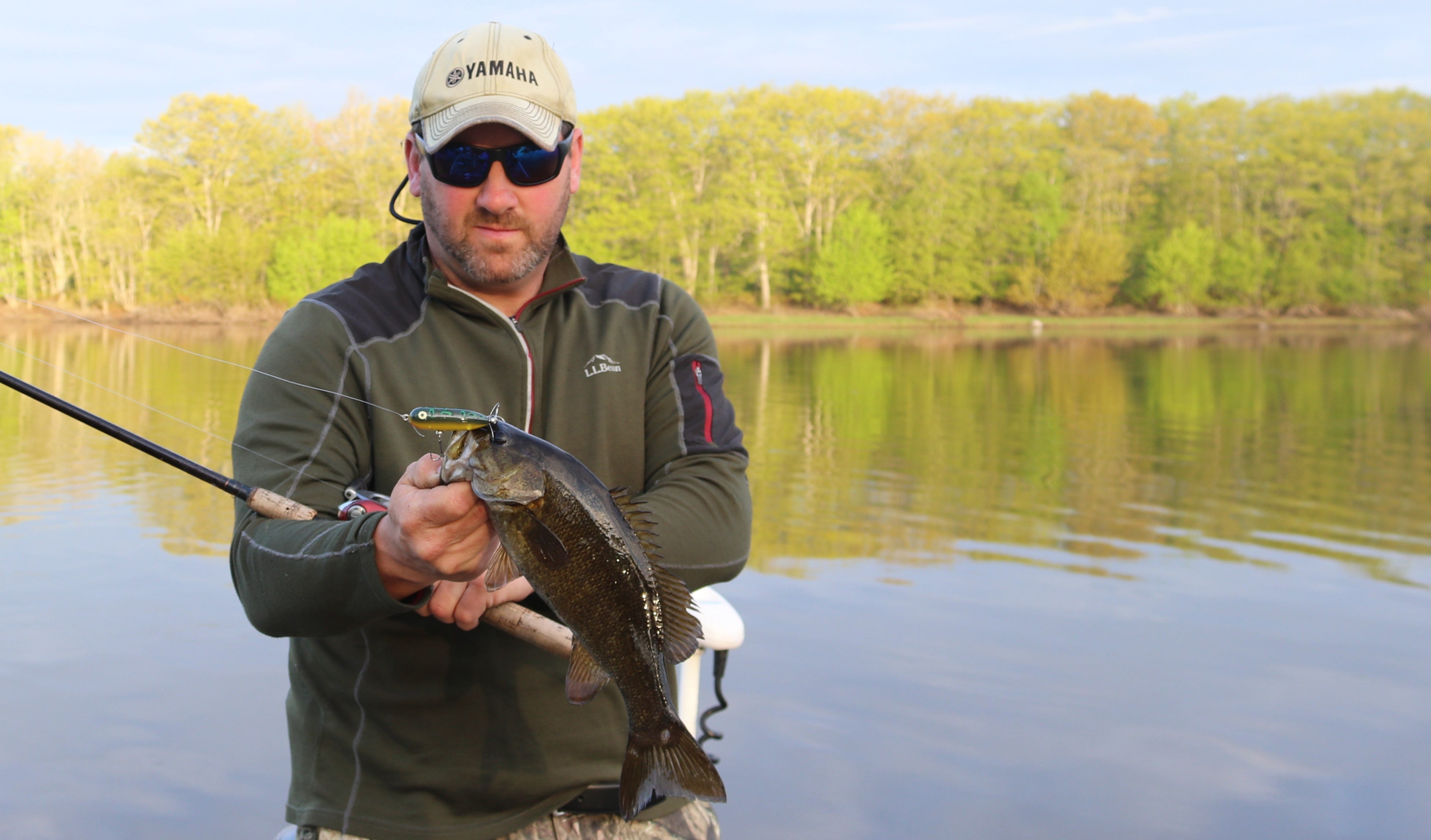

“You’ve spent enough time with me to know that the program doesn’t really change,” Teel said, talking about his lure selection. He knows that smallmouth bass can be caught many ways and on various lures. However, he has identified a small group of lures that collectively cover the smallmouth’s moods and that virtually always get the job done on his boat.
Teel fishes a Heddon Baby Torpedo for fish that are looking up, and a weighted, wacky YUM Dinger for when the bass are feeding closer to the bottom. When fish show preference toward a swimming lure, he uses a Rebel Wee-Crawfish or Bomber Square A.
Covering situations with lures he knows extremely well and that he knows produce is far more efficient from Teel’s perspective than carrying a huge box full of lures. This simplicity has allowed him to figure out specific presentations for each lure that consistently produce.
Teel starts every day with a Baby Torpedo on one rod, YUM Dingers on two rods and a crankbait on a fourth rod and will start with the Torpedoes and Dingers but will hand anglers different rods as he goes to figure out the fish’s preferences. If the fish show any significant interest in the Torpedo, he’ll be quick to change one or more other rods to those simply because topwater smallmouths are so much fun for everyone.
2) Watch the Water


A river’s surface reveals an amazing amount about what lies below. Isolated ripples and swirls show where rocks are on the bottom because the rocks cause breaks in the current and a swirl around both sides. Teel likes to cast a Baby Torpedo just upstream of any rough spot on the water and let the current deliver it to that spot. When the lure hits the rough area and turns just a bit, that’s when he twitches it slightly to splash the blades, often triggering an immediate strike.
Teel also watches for seams between current lines and eddies and looks down into the usually clear water to see where the bottom drops a bit deeper or the bottom make-up changes. He has fished the Penobscot for many years and knows what is on the bottom in many areas, but the river level varies substantially, according to recent rainfall patterns, changing productive spots. Plus, every flood condition re-arranges channels and bars.
This year, the Penobscot has been unusually low, substantially changing which areas produce best. The low water has also revealed areas of river bottom that Teel cannot normally see, showing some outstanding rocky cover that he previously didn’t know existed. Some of those areas have already produced well for him during periods of slightly higher water.
“I’m sure the fish have always used those areas,” he said. “I just didn’t know they existed.”
3) Use the Current
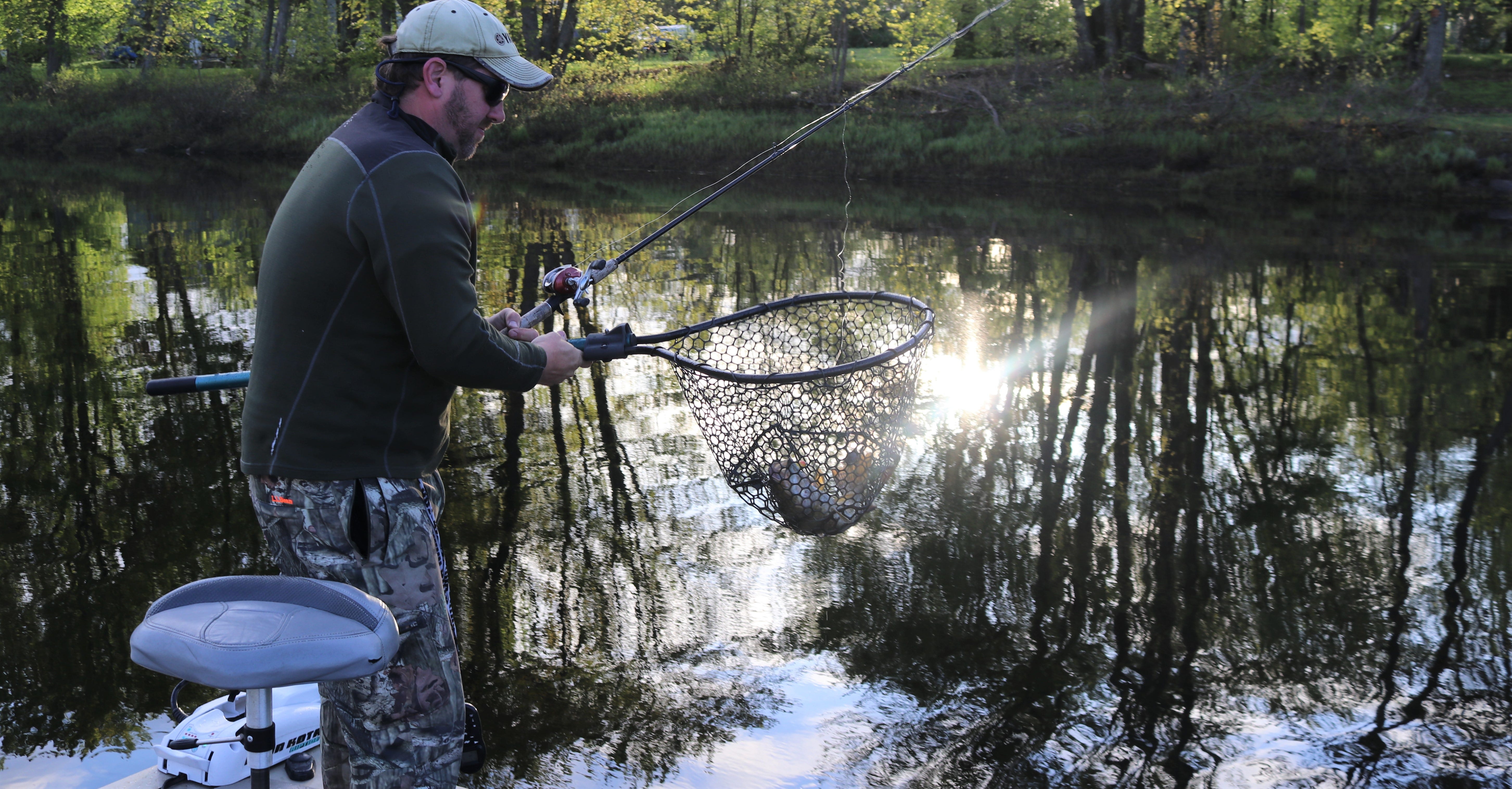

River smallmouth bass are ambush feeders that use current and current breaks to their advantage, so Teel seeks to do likewise. When he fishes a Baby Torpedo or a YUM Dinger, he lets the current do the delivery work for the sake of the most natural presentations.
With the Torpedo, he’ll cast upstream of a submerged rock, close to a weedline, upstream along a current line or close to a boulder and then let the lure drift on top. He’ll twitch it in key spots to trigger strikes, but rarely truly works the lure back. The current carries it naturally, he adds action with his rod, and he uses the reel to take up slack.
Teel’s Dinger presentation is similar. He weights the rig with a 3/16-ounce bullet sinker, though, so it finds bottom, instead of drifting freely. When the bait hits bottom, Teel lifts the rod tip from straight out to about cap-bill high and then drops it again, taking up slack in the line as the bait drops and moves downstream. It’s a slow but continual lifting and dropping, with the current carrying the bait on every drop.
4) Remember the Other Side
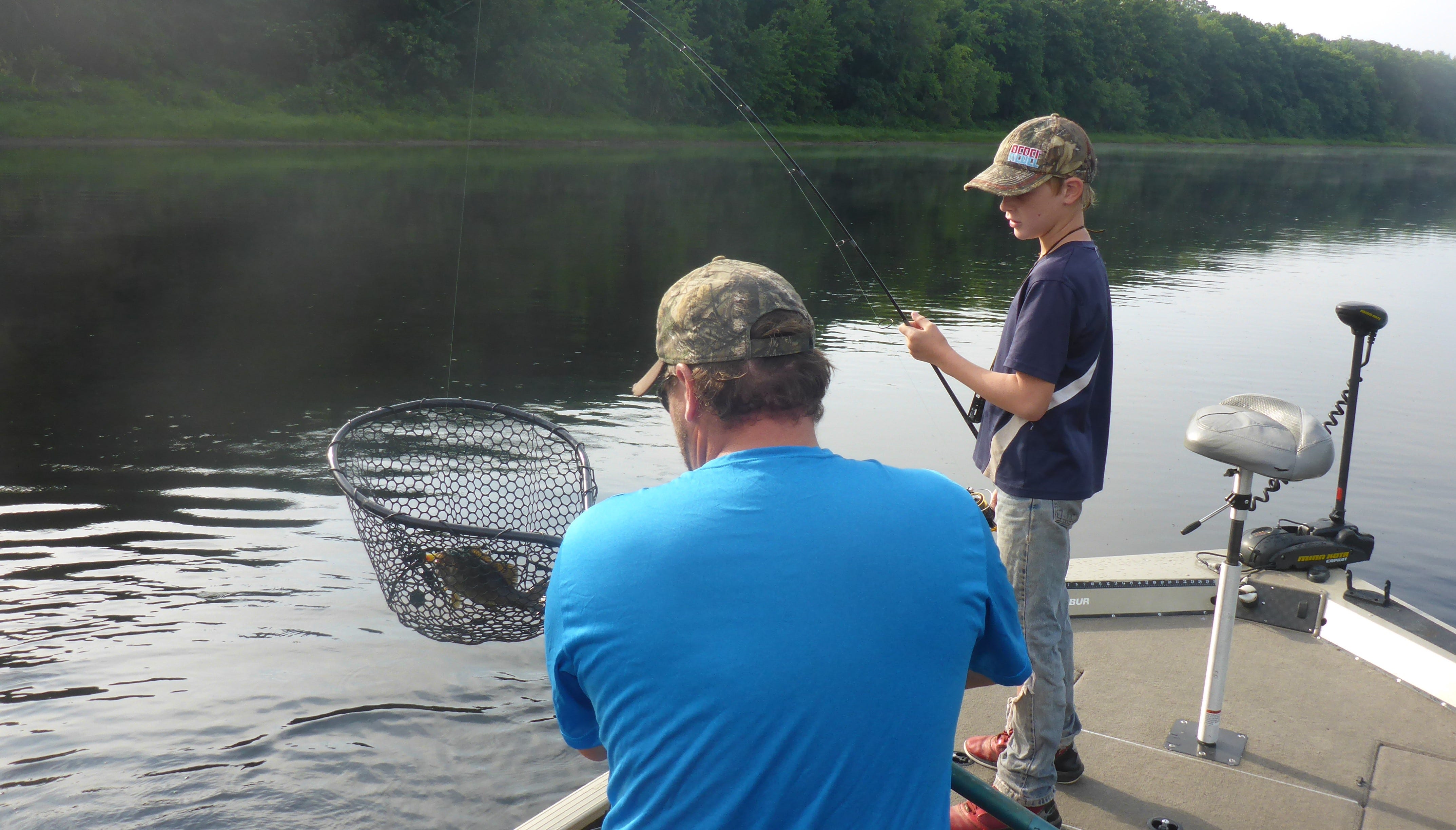

“My mentor always told me, ‘Every now and then, make a cast to the other side of the boat.’ That’s important advice, and I repeat it often to my clients,” Teel said.
Even when Teel is working the bank, casting to a grass line, boulders or other cover, occasional casts toward the middle of the river, to water that looks open and featureless, produce a surprising number of fish.
The Penobscot, like most rivers, hides a lot of subtle fish-holding features that no one would ever fish without that strategy. Also, feeding river smallmouths commonly cruise completely open waters in search of baitfish schools.
5) Slow Your Cranking
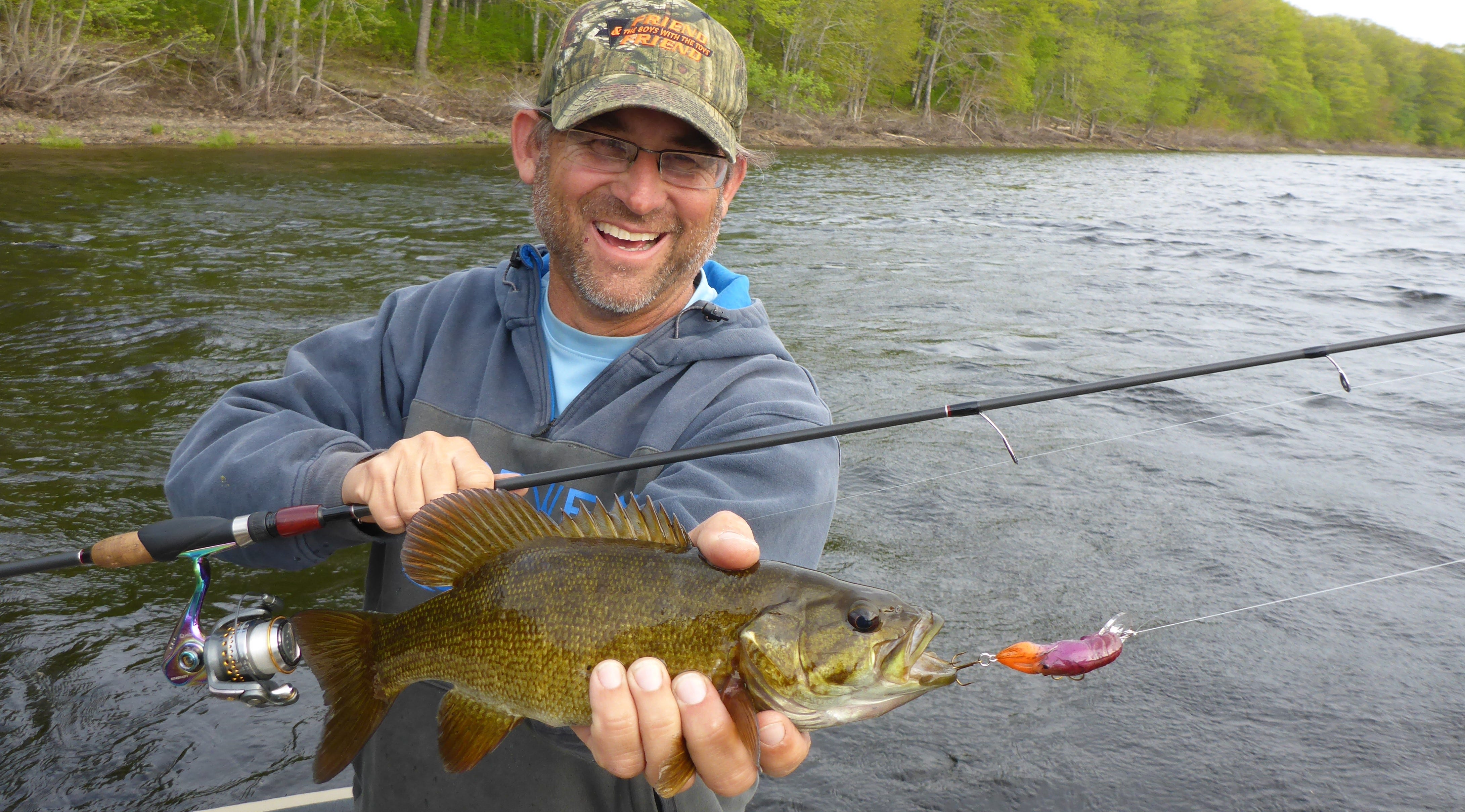

Teel finds the best crankbait results with a slow retrieve, cranking just fast enough to keep the bait’s wobbling action engaged. Faster presentations cause the same baits to dig more and commonly pick up vegetation that fouls the action. As significantly, he simply doesn’t see as many fish caught with fast cranking.
When he hands an angler a crankbait rod, he always encourages a “slow roll.” When fish don’t bite right away, though, anglers tend to speed up crankbait retrieves, trying to trigger strikes. That usually doesn’t work.
For anglers who patiently maintain a slow cadence and pause or slow to a crawl when they feel the crankbait touching bottom, a Wee-Crawfish or Square A can be exceptionally productive. A Rebel Crawfish runs notably deeper than a Sqare A. Teel wants a crankbait hitting bottom from time to time, but not dredging, so bottom depth is his primary determinant as to which crankbait to use.
6) Go When You Can
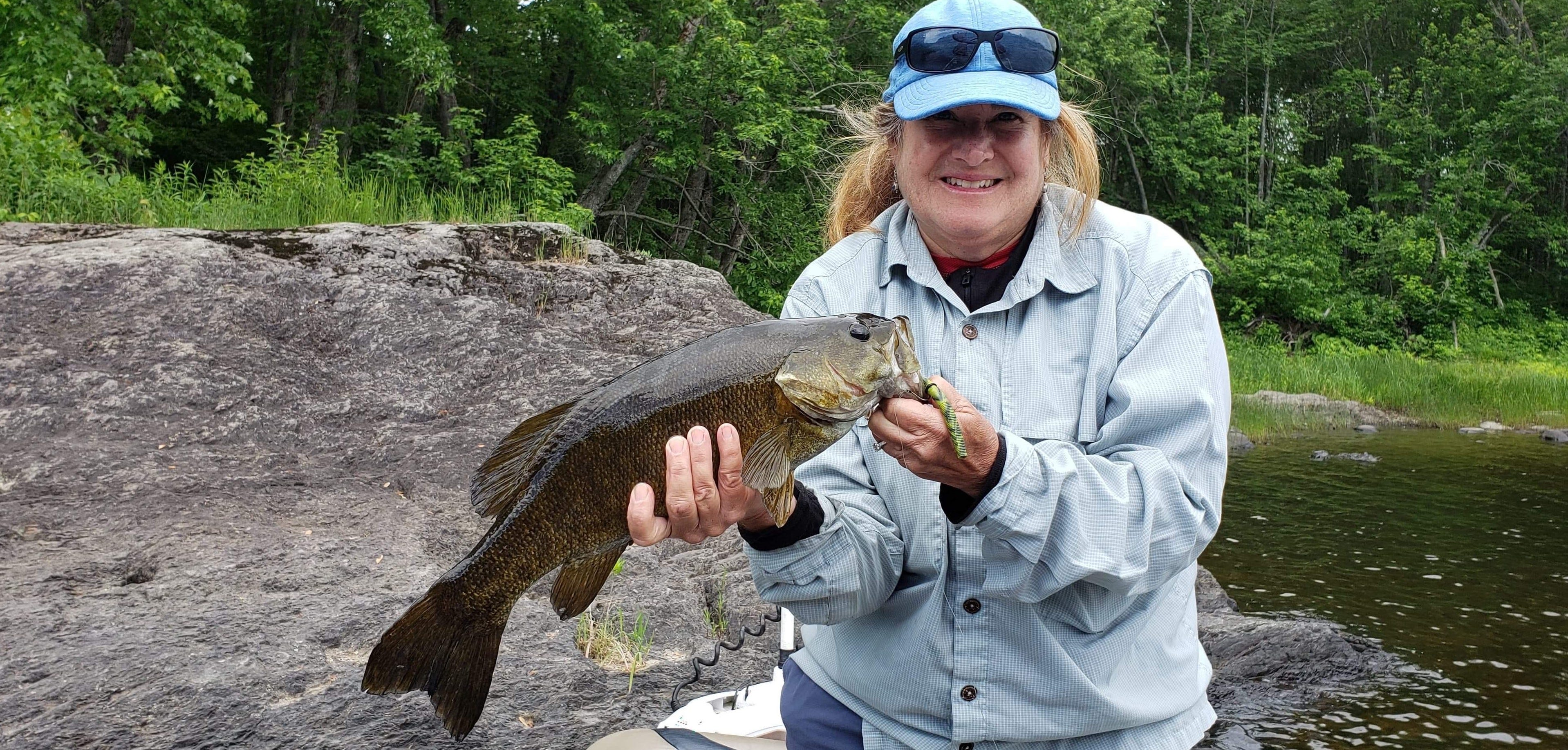

“One of the best things about river smallmouth fishing, is that we don’t need to be there at 4:30 in the morning. The fish bite well all day long,” Teel said.
The cool moving water tends to moderate conditions throughout the day, and river fish feed opportunistically. To stay away because you can’t get out at classic “prime fishing times” is to miss out on great fishing opportunities.
Teel plan trips based on what is practical for clients and fits with their total plans and based on what weather allows.
“Late in the summer, there can be a slight mid-day lull for a couple of hours, but the bite never stops,” Teel said. “Instead of catching three of four fish every ten minutes, you might catch one or two,” he said.
Guide’s Color Picks
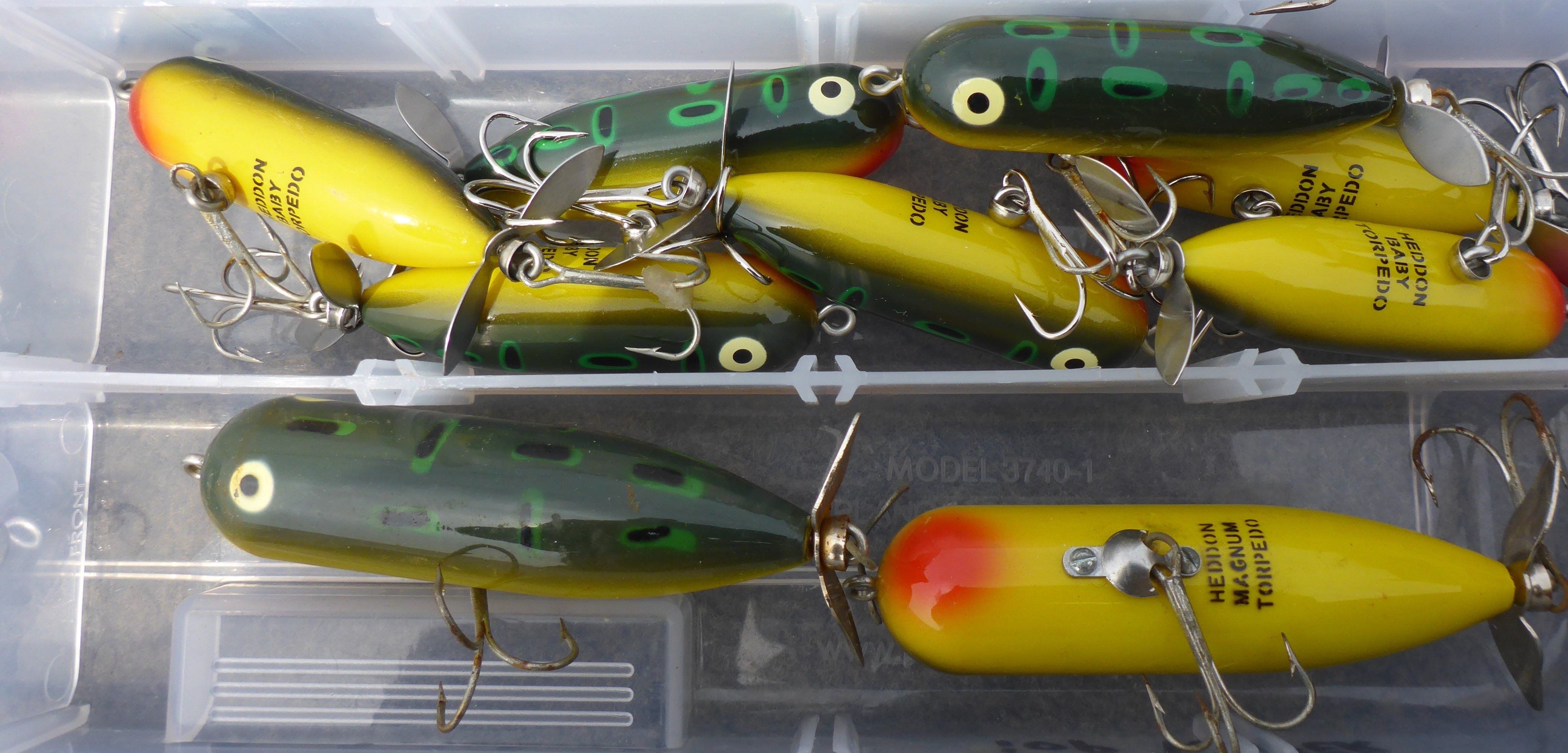

- Heddon Baby Torpedo – Bullfrog
- YUM Dinger – Bumble Bee Swirl
- Rebel Wee-Crawfish – Flaming Junebug
- Bomber Square A – Apple Red Crawdad
Want to Go?
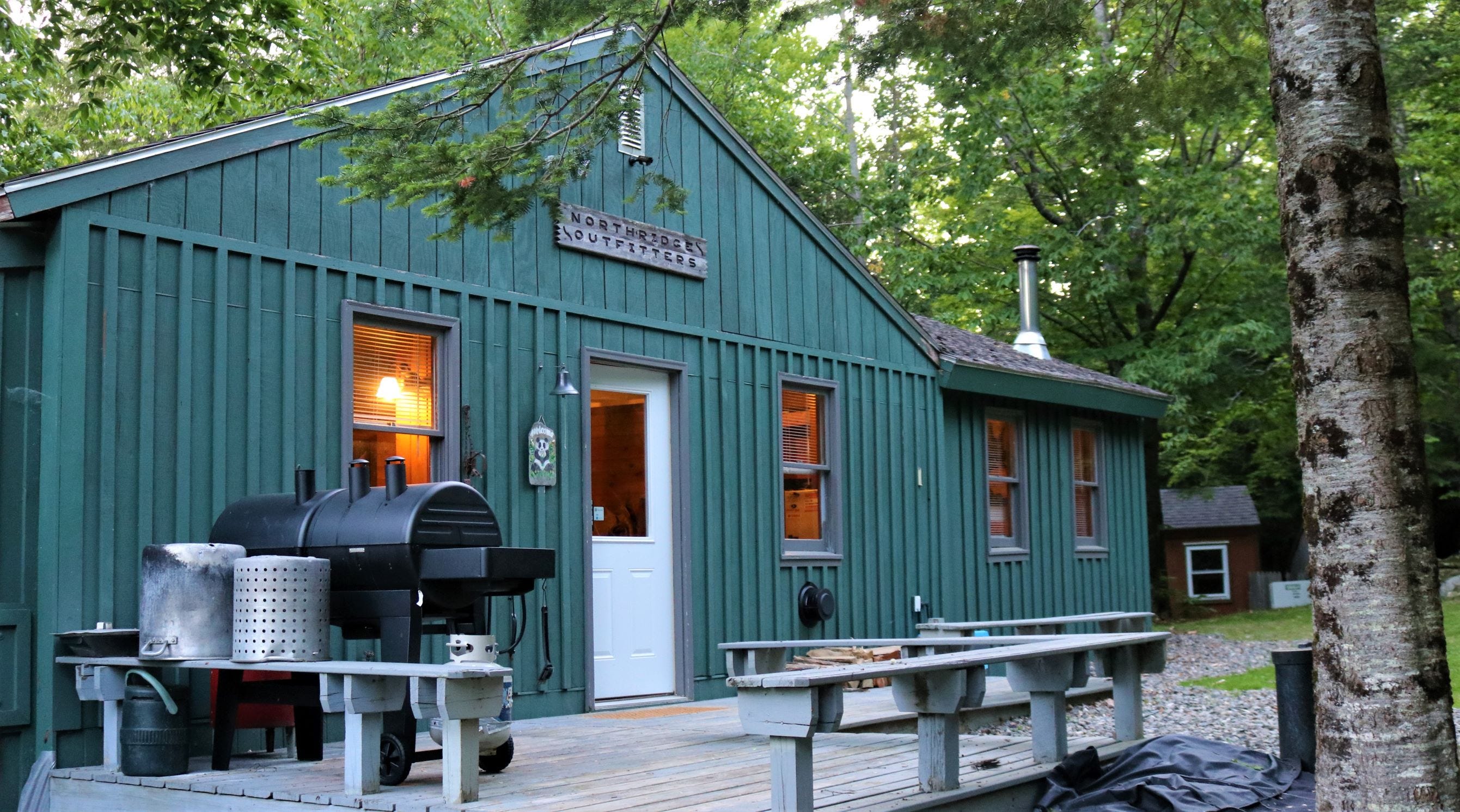

Along with fabulous smallmouth trips on the Penobscot River, Northridge Outfitters offers a host of fully outfitted fishing and hunting experiences for everything from brook trout to bears to upland bird and rabbits, with a full-service lodge in Greenfield Township, Maine.



